As support teams look to the year ahead, there’s no shortage of priorities to juggle – from team efficiency, to customer experience, to business impact. New research from Intercom reveals how support leaders are striking a balance.
Today support teams have a full plate. Customer expectations are on the rise and, at the same time, all parts of the business are facing increased pressure to operate more efficiently and at lower cost. The global health crisis has only upped the stakes – it’s never been more important for support leaders to demonstrate just how much of a value driver their team really is.
To find out how support leaders are navigating the current landscape, we surveyed a random sample of 593 support managers across both B2B and B2C and industries like education, retail, healthcare, and tech. We asked them about their top challenges, their key initiatives, and the opportunities they see to deliver even greater value to their customers and the business.
“What emerged from our research is a modern playbook for support”
What emerged is a modern playbook for support. In the coming year, 55% of support leaders are increasing their spend on technology to scale their efforts. The majority (78%) want to move to a proactive approach, and 50% are deepening their investment in automation. With a focus on ROI, nearly a third (30%) plan to measure their team’s impact on customer retention.
Below we dive into each of the five key trends from our research. Together they provide a blueprint for how support leaders can keep everything in balance: a great customer experience, high levels of efficiency, and measurable bottom-line impact.
1. Customer expectations are rising and support teams need to catch up
It should come as no surprise: customer expectations are higher than ever. As consumers, we know full well just how high our expectations are – we want quick, personal support, 24/7.
But here’s the problem: while 73% of support leaders say that customer expectations for their team are increasing, less than half (42%) are sure they’re actually meeting those expectations.
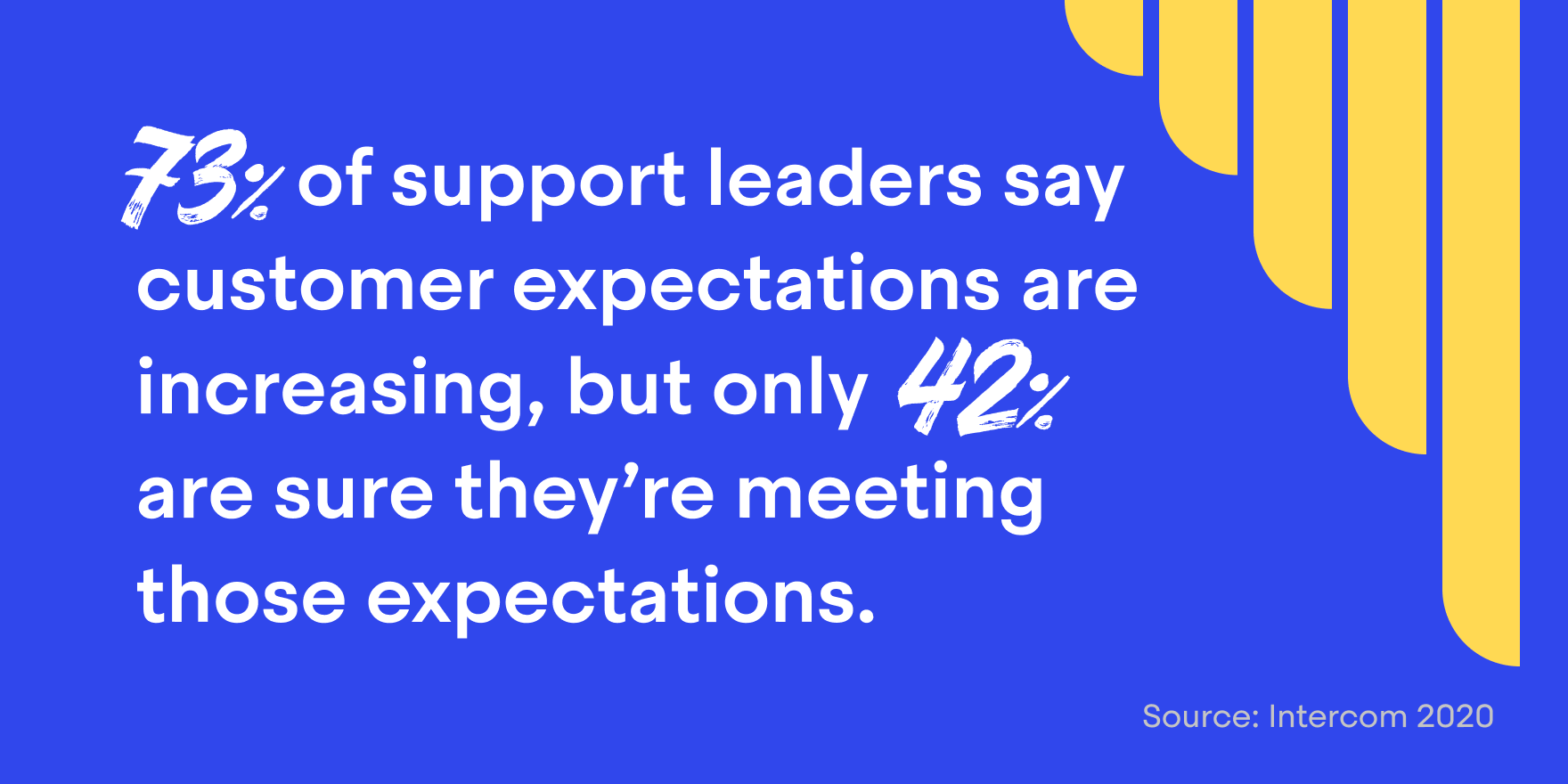
In a world where buyers have tens, if not hundreds, of choices, businesses need to deliver what customers want or risk losing out to the competition. Support leaders have taken this on board as a top challenge for their team, with meeting customer expectations (18%) ranking alongside increasing workflow efficiency (14%) and helping their agents manage conversation volume (13%).
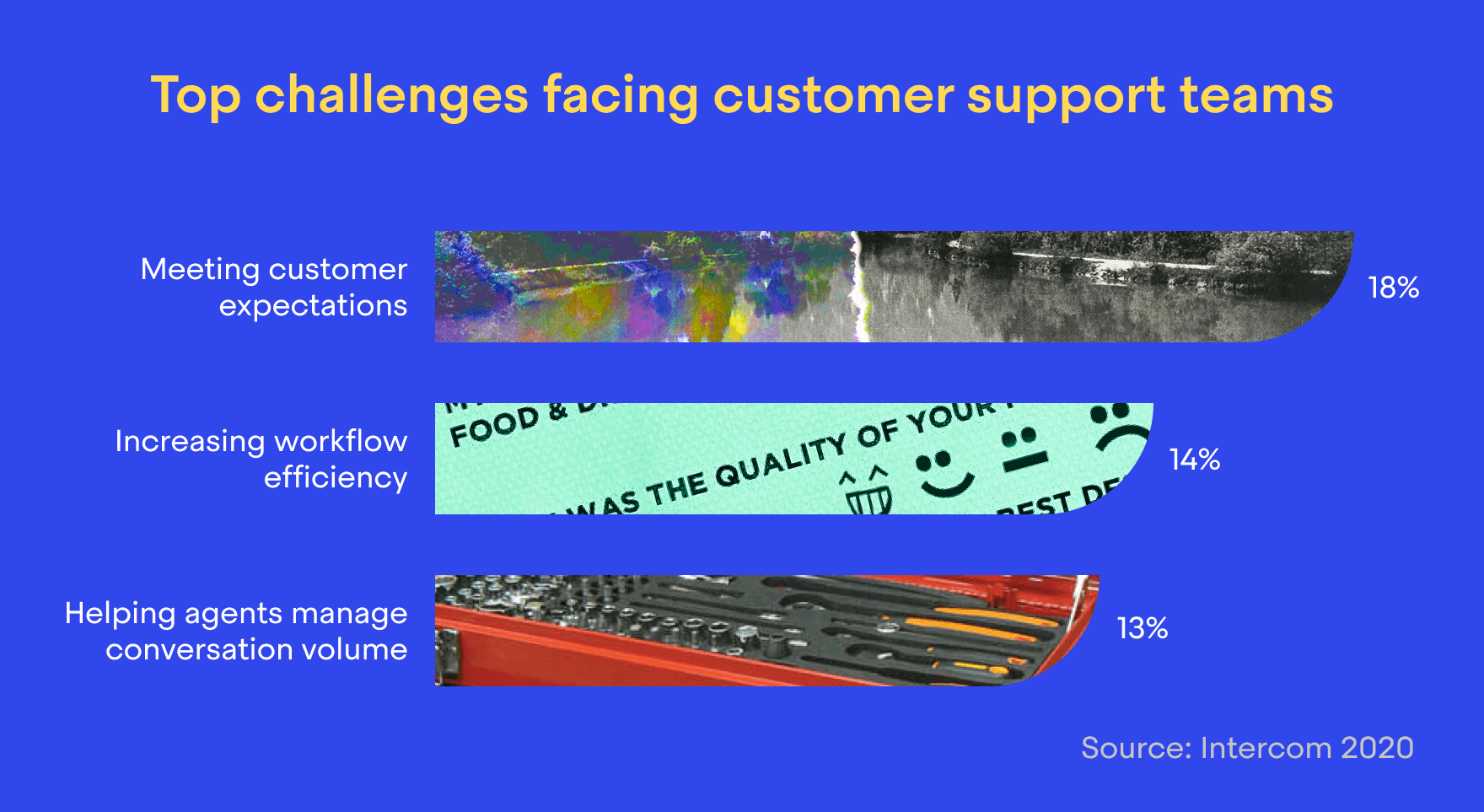
So, if meeting customer expectations is a top challenge for support leaders, how exactly are they working to solve it without breaking the bank or overloading their teams?
2. A technology-driven playbook emerges
While customer expectations might be rising, budgets are shrinking. With more than half (52%) of companies planning to reduce the size of their team as a result of the current economic downturn, support leaders are turning to technology, not headcount, to scale their efforts.
In fact, 55% of support leaders plan to increase their spend on technology in the coming year. By deepening their investment in critical tools, businesses can offset the anticipated impact of downsizing their team which, as our research reveals, include longer wait times and lower customer retention.

Today the overwhelming majority (77%) of support teams use 1-10 tools, with 44% using between six and 10. While it’s clear that tools like knowledge bases, phone support, and ticketing systems deliver immense value to frontline agents and customers, what’s concerning is 46% of support leaders believe their current tech stack actually holds them back from achieving their goals.

Within the next 12 months, slightly over half (54%) of support leaders plan on optimizing their tech stack. Their top objectives are to make it more efficient and consolidate their tools. It’s a much-needed fix: today 41% of support teams are slowed down either daily or weekly by siloed tools. Yikes.
“41% of support teams are slowed down daily or weekly by siloed tools”
A great support tech stack should do more than just solve one-off pain points, e.g. live chat or help docs. It’s the vehicle for delivering the experience your customers expect at the scale your business needs. As support leaders look to the coming year, our research shows two key areas of investment: proactively answering customers’ questions and automating support with chatbots.
3. The shift to proactive support gains momentum
For decades, businesses subscribed to the same reactive support strategy: answer every question as it comes in and hope your team can keep up. The problem with this model? It traps your agents on an endless treadmill of queries and leaves your customers stuck waiting on hold.
Today support leaders are increasingly investing in a different approach – proactive support. Our research shows 78% of support leaders want to move from a reactive to a proactive approach. For enterprises that have more than 3,000 employees, they’re 50% more likely to want to make that transition.

It makes sense: proactive support empowers businesses to get ahead of known customer questions and issues before they arise. For companies with thousands of customers, it’s the antidote to 72-hour turnaround times, unending ticket backlogs, and burnt out agents.
“Proactive support empowers businesses to get ahead of known customer questions and issues before they arise”
At Intercom, we use proactive support to onboard customers, alert them to known issues, and surface our top FAQs. This not only reduces the number of conversations that ever reach our support team, it delights our customers too – by giving them the information they need at the exact moment they need it.
4. Chatbots go to work, for customers and agents
When customers do need to reach out, chatbots are powering faster resolutions to their queries while simultaneously reducing overhead for frontline agents. Modern chatbots can triage issues, route customers, and even answer routine questions, all on their own.
“Chatbots are powering faster resolutions to customer queries while reducing overhead for agents”
The business impact is impressive: companies who use chatbots are 60% more likely to report a definite improvement in resolution times and 30% more likely to report a definite improvement in customer satisfaction. What’s more, support teams who use chatbots are 27% more likely than those who don’t to say they’re able to meet increasing customer expectations.
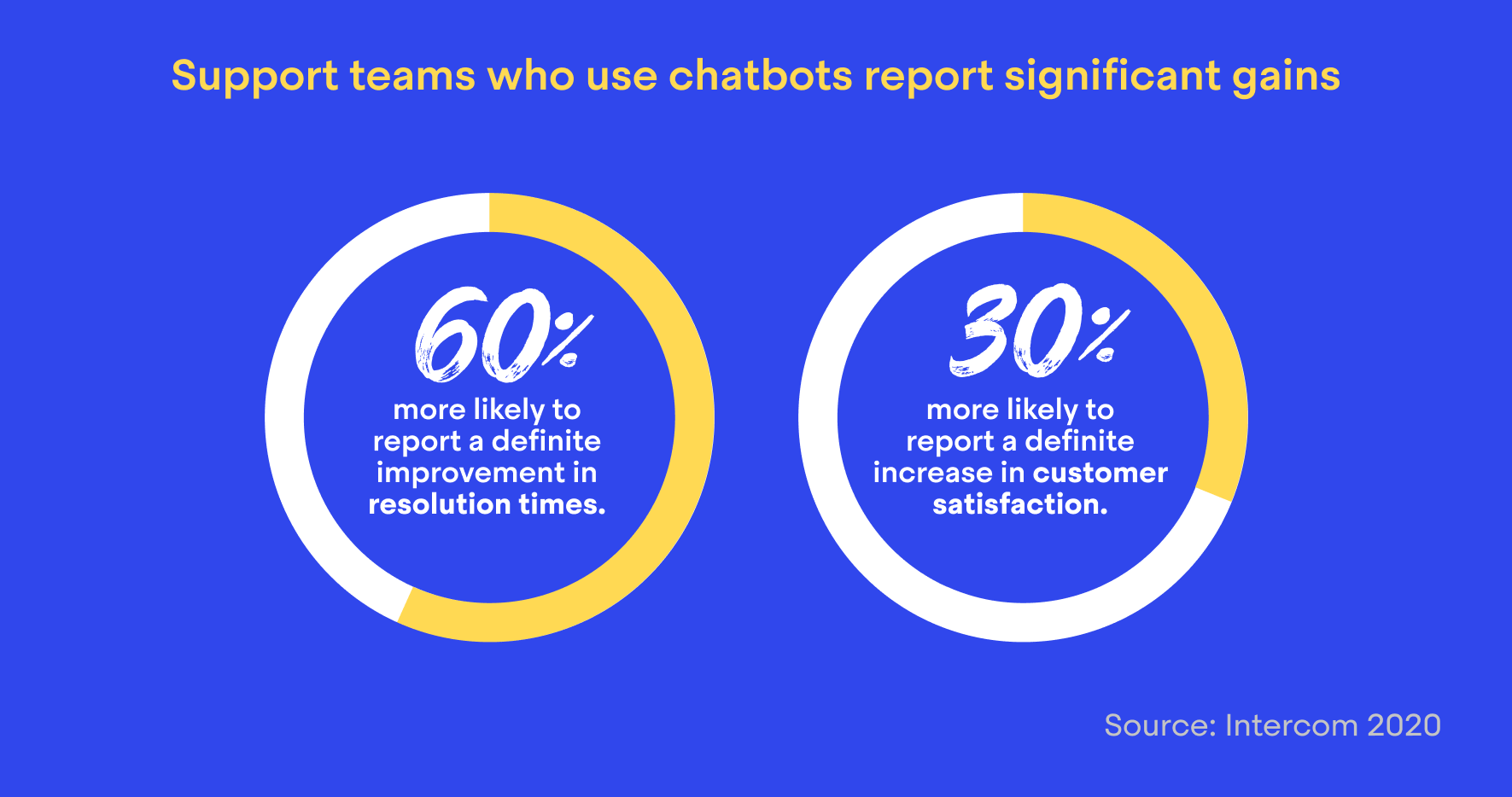
It’s no surprise then that, in the coming year, 50% of support leaders plan to invest more in automation, including chatbots, to increase their team’s efficiency. Companies that already use chatbots are doubling down on the benefits they’re seeing – they’re nearly 4x more likely to continue investing in automation.

Today customers will settle for nothing short of fast, personal responses and, with chatbots, support teams are able to give them a self-serve experience that delivers. Our own customer Biteable uses our chatbot Resolution Bot to resolve 38% of customer questions instantly, saving their team more than 800 hours to-date and their customers more than 1,000 hours.
5. A path to measurable business impact takes shape
Support teams intuitively know that their impact on customers – and the business – extends far beyond how many tickets they close and how fast they close them. But, until recently, having any measure of ROI was elusive for most support teams.
Today the leading metric for support teams is customer satisfaction. Nearly a quarter (24%) of support leaders say this is the metric they most closely track. Measuring customer satisfaction enables businesses to know just how successfully meeting customer expectations. It’s also a crucial leading indicator of future churn and customer retention.
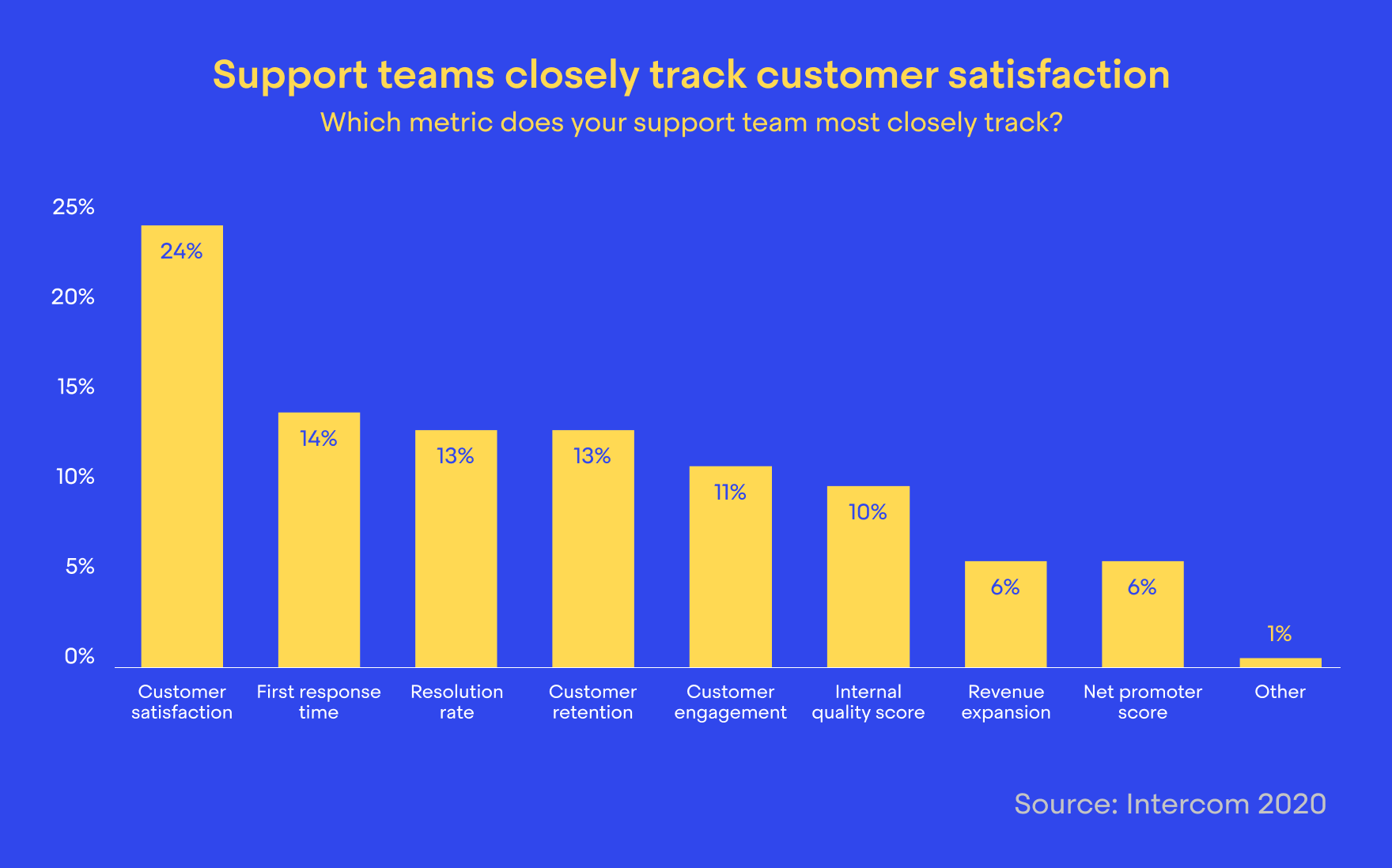
What customer satisfaction is not, however, is a measure of ROI. When it comes to the bottom line, customer satisfaction can’t tell you, in dollars, how many customers your agents helped retain or grow. In fact, 43% of support teams don’t measure ROI at all.
So, what’s standing in their way? It turns out many of the same challenges that make the trends we’ve already discussed such a great investment. In short, support leaders are hampered by a lack of technology and too much time spent on repetitive tasks and managing conversations.
“A narrow focus on measures of customer experience or efficiency alone misses the bigger picture – good support is good business”
As support leaders look to the coming year, many plan to address these hurdles head on and shed new light on their team’s contribution to business growth. Our research shows 30% plan to measure their team’s impact on customer retention and 25% plan to do the same for renewals.
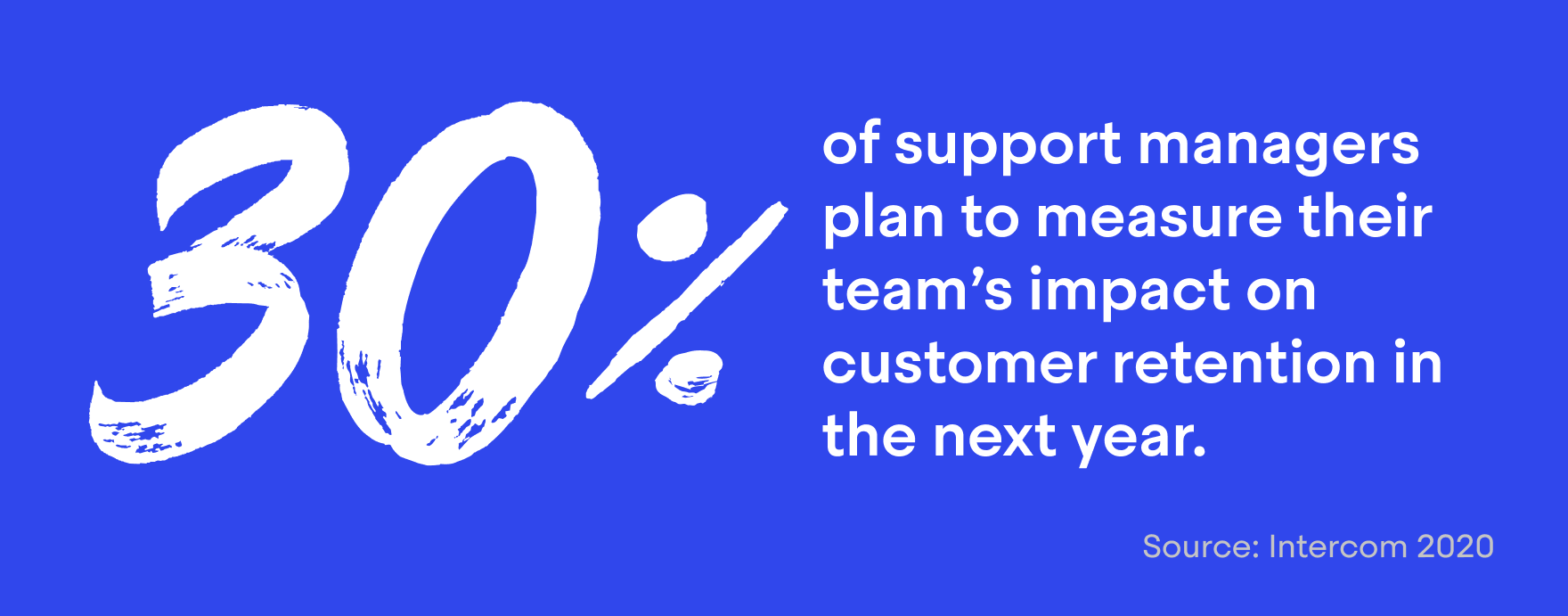
A narrow focus on measures of customer experience or efficiency alone misses the bigger, and more important, picture. To put it simply: good support is good business.
What this means for support leaders
Today support teams juggle many, and oftentimes competing, priorities: meeting customers’ ever-rising expectations, operating with high levels of efficiency, and demonstrating their true ROI. But, as our research reveals, they’re finding innovative ways to balance them all.
Support leaders are leveraging technology to provide fast, personal support at scale. More than that, they’re using technology to rewrite the old playbook and invest in new ways of helping customers – by taking a proactive approach and embracing chatbots for self-serve support. They’re not stopping there: support leaders also plan to measure their team’s bottom-line impact.
“The value of a great support experience can’t be understated”
At Intercom, we firmly believe this is the modern way of providing support. In a world where businesses live or die by their customers’ loyalty, the value of a great support experience can’t be understated. The key to delivering it is the Conversational Support Funnel, a messenger-based approach that brings together the best of proactive, self-serve, and human support.
With the Conversational Support Funnel, you can preemptively address known customer questions and automatically answer routine ones, so your support team can focus on the complex and VIP issues that actually require their expertise. The result: a way better experience for your customers and a more productive and efficient team. It’s exactly what support leaders need to prioritize their team’s true purpose – being an engine of customer growth.
Top businesses like MongoDB, Aer Lingus, and Medallia are already seeing the benefits of the Conversational Support Funnel with Intercom. Are you ready to join them? Learn more here.
A note about methodology
Intercom commissioned an independent market research firm to survey a random sample of 593 support managers and leaders. The study’s margin of error is +/-4% at the 95% confidence level.
